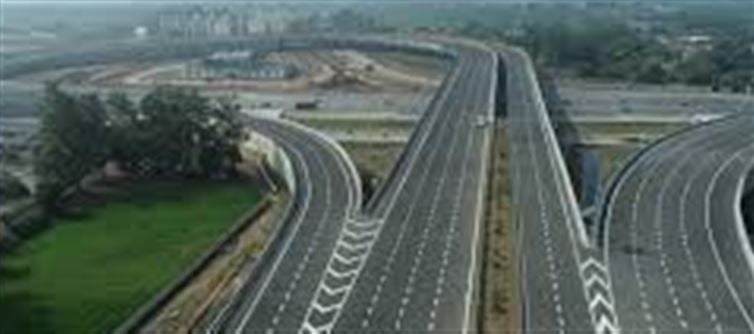
In an exciting development for indian infrastructure, the Delhi-Mumbai Expressway, one of the country's largest and most ambitious road projects, is set to open by March 2026. This expressway will dramatically reduce travel time between two of India's largest metropolitan cities—Delhi and Mumbai. With the completion of this key stretch, the total journey time will be slashed to just 12 hours, making it much quicker and more convenient for travelers.
Here’s everything you need to know about this game-changing project:
1. What is the Delhi-Mumbai Expressway?
The Delhi-Mumbai Expressway is a six-lane, 1,386-kilometer-long expressway that aims to connect Delhi and Mumbai, two major economic hubs in India. The project has been planned to address the growing traffic congestion and to provide a fast, efficient, and safe route for travelers.
· Length: 1,386 kilometers
· Travel Time Reduction: From the current 24 hours to just 12 hours
· Number of Lanes: 6-lane highway for smooth and rapid travel
2. Final Phase of Construction
According to South delhi MP Ramvir Singh Bidhuri, the expressway is now in its final phase of construction. The stretch connecting Delhi's DND Flyway to Sarai Kale Khan in Mumbai is nearing completion and will soon be open for public use. The expressway will offer a seamless connection between the two cities, significantly improving intercity travel.
Key details include:
· The final phase will include finishing touches like road signs, safety barriers, and pavement markings.
· Once completed, it will feature high-tech toll plazas and advanced traffic management systems to ensure smooth flow and safety.
3. Features of the Delhi-Mumbai Expressway
Here are some of the standout features of the new expressway:
· Cutting-edge Design: The expressway is being built with modern road-building technologies, ensuring durability and reduced maintenance.
· Improved Safety: The expressway will have dedicated emergency lanes, advanced lighting systems, and traffic monitoring technologies to ensure the safety of travelers.
· Eco-friendly Solutions: The project incorporates green initiatives, including solar power systems, rainwater harvesting, and the use of eco-friendly materials.
· Interchange Facilities: Several interchanges along the route will make it easier for people to access towns and cities along the way without deviating too much from the main route.
4. Key Benefits of the Delhi-Mumbai Expressway
· Reduced Travel Time: The expressway is expected to cut down the travel time between delhi and mumbai to just 12 hours, compared to the current 24-hour journey. This will significantly boost business, tourism, and freight transport.
· Economic Growth: By improving connectivity between two of India’s largest economic centers, the expressway will encourage the movement of goods and services, benefiting industries and boosting the economy.
· Ease of Commuting: Travelers can look forward to a smoother, faster, and more comfortable ride, as the expressway will offer modern amenities, rest stops, and fuel stations at regular intervals.
· Better Connectivity for Smaller Cities: The expressway will also enhance connectivity to smaller cities and towns that lie between delhi and mumbai, further promoting regional development.
5. Expected Completion Timeline
While the final stretch of the Delhi-Mumbai Expressway is still under construction, it is expected to be fully operational by march 2026. The project has been moving at a rapid pace, and once completed, it will revolutionize intercity travel in India.
· Projected Opening: march 2026
· Current Status: The expressway is in its final construction phase with work on roads, signage, and toll booths.
6. Future Impact and Other Highways
The Delhi-Mumbai Expressway is just one part of a larger vision for India’s highway network. This project will connect not just delhi and mumbai, but also play a key role in facilitating the movement of goods and people across the country.
Additionally, it will complement other ongoing infrastructure projects such as:
· Bharatmala Pariyojana: The government’s initiative to create an integrated road network that connects key economic hubs and facilitates smoother logistics across the country.
· Eastern Peripheral Expressway: Aiming to decongest Delhi’s traffic by creating a bypass around the city.
7. Conclusion
The Delhi-Mumbai Expressway will be a game-changer for India’s road infrastructure, significantly reducing travel time, enhancing connectivity, and fostering economic growth. By March 2026, travelers will be able to commute between delhi and mumbai in just 12 hours, making this one of the most ambitious and awaited projects in the country.
Disclaimer:
The views and opinions expressed in this article are those of the author and do not necessarily reflect the official policy or position of any agency, organization, employer, or company. All information provided is for general informational purposes only. While every effort has been made to ensure accuracy, we make no representations or warranties of any kind, express or implied, about the completeness, reliability, or suitability of the information contained herein. Readers are advised to verify facts and seek professional advice where necessary. Any reliance placed on such information is strictly at the reader’s own risk..jpg)




 click and follow Indiaherald WhatsApp channel
click and follow Indiaherald WhatsApp channel